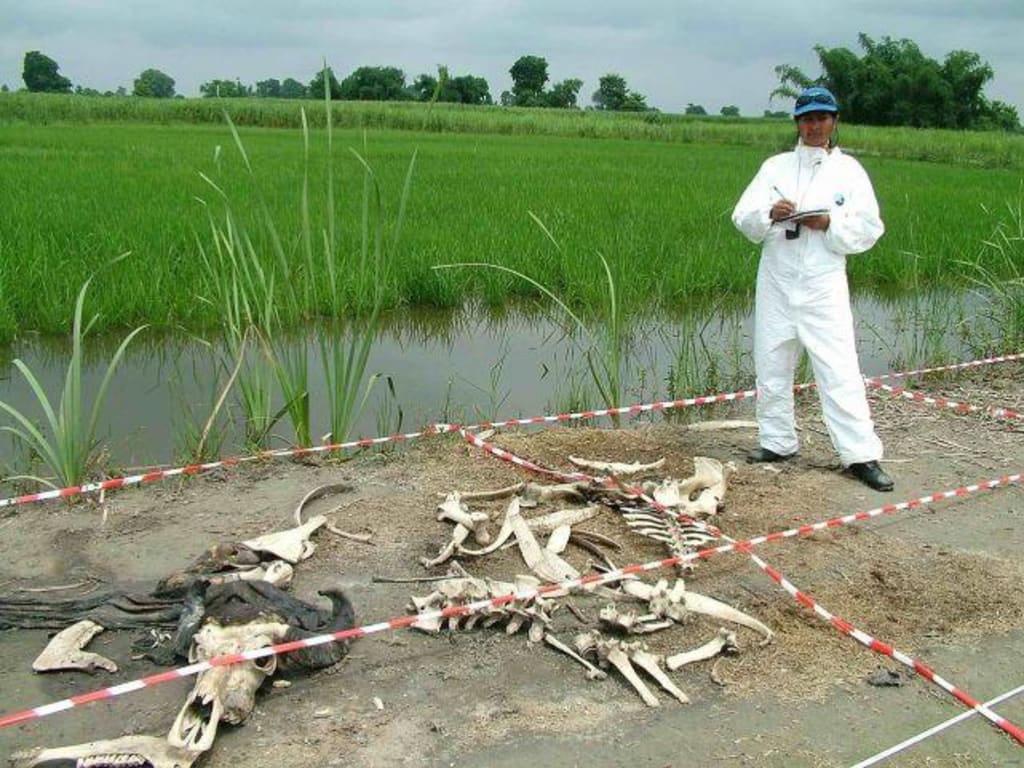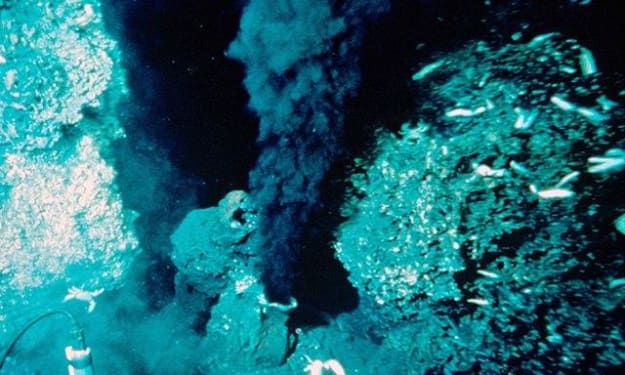Why do people stink quickly after death, but pork and mutton don't?
"corpse farm"

There is such a research institution, called "corpse farm", which is mainly used to study the decay of corpses in various environments.
In 2004, scientists conducted a 6-month cadaveric study at the "corpse farm" on human cadavers (voluntary donations or unclaimed cadavers) and animal cadavers, mostly pigs, because Pigs and humans have similar physiological characteristics.
During these 6 months, under the same environment, the compounds of decomposing corpses were collected regularly.
In the end, the scientists extracted 452 organic compounds, while pig and human carcasses differed in only five compounds.
According to the whole experiment process, people have also found that no matter how noble a human beings place themselves, after death, they are the same as other animals, and they have to experience the stench and corruption of their bodies. And the degree of corruption of the body depends mainly on environmental factors, not the attributes of the body.
So why in real life, people stink soon after death, but pork and mutton don't?
Obviously, it has something to do with the way the body handles it.
Pork and mutton are the food we often eat. During the slaughtering process, we will go through the process of slaughtering, bloodletting, evisceration, ventilation and hanging, and sale in pieces. A variety of bacteria, under the action of microorganisms, the body begins to decompose from the inside to the outside, and a variety of metabolites will be produced, and these metabolites are the source of odor.
What is the taste of death?
Studies have shown that the smell of death consists of more than 800 chemicals.
Some of these chemicals are human-specific death odors, so the research on death odors is mainly to find the uniqueness of human corpses, so that they can be used to train "corpse-hunting dogs", so that corpse-hunting dogs can distinguish animal corpses from humans. corpse, and quickly find the location of the corpse.
The smell of death research is not based on fun, in fact, the smell of death has been accepted as evidence in criminal investigations.
In 2011, a man who brutally murdered his 2-year-old daughter was convicted as part of the evidence found in the trunk of his car with the relevant smell of death.
What was the smell of death like?
My first close encounter with a dead body was when my father died when I was a student. It was the end of April at that time, and the weather was not very hot. According to local customs, the bodies were parked for 3 days. During these 3 days of close contact, there was no odor.
Another time, an old grandpa next door passed away. It was midsummer and it was parked for 3 days, but I could still smell the stench in my room. In retrospect, it was similar to the smell of rotten eggs.
In fact, from a scientific point of view, the odor emitted by the corpse is mainly the odor of cadaverine and putrescine, which is produced by the decomposition of amino acids. In addition, there are also methyl indole (also called skatole), hydrogen sulfide (rotten egg smell), methyl mercaptan and other substances.
What factors are related to the rate of odor?
Generally speaking, untreated corpses will go through 5 processes:
1. The fresh stage
From the moment of death, the decomposition of corruption has started, but from the appearance, the corpse that has just died is intact. After the corpse is frozen, the face of the corpse will become pale, and the blood will gather on the side close to the ground under the action of gravity.
2. Expansion stage
At this stage, the microorganisms in the human body have begun to decompose the body tissues. At this time, the active organisms in the body are mainly anaerobic microorganisms. The decomposition will produce gases such as methane. Because the gas cannot escape, the corpse begins to swell.
Especially the abdomen, like a balloon, bulging and emitting a stench, this phenomenon is also known as "giant view".
3. Early stage of decay
Generally speaking, 24 hours after the death of the human body, the odor will be emitted. For humans, these odors are not friendly, but for insects, the odor is an "invitation ticket" to a buffet feast, where these bugs dine and lay their eggs.
The gas inside the corpse was slowly released by the insects, and the corpse slowly collapsed, the internal tissues began to decompose and liquefy, and the skin began to turn black.
4. Late stage of decay
At this stage, the decomposition and liquefaction of the internal tissues are almost completed, the food is eaten, and most of the bugs leave to find their next habitat, and the odor gradually disappears.
5. White ossification
All the soft tissue is broken down, hair and nails fall off, leaving only bones.
According to the whole process of the decomposition of the corpse, the speed of the corpse stink is actually the speed of decomposition, which is closely related to the external environment. These factors include: temperature, humidity, whether it is close to the water source, whether there are many microorganisms and insects around, oxygen Is it sufficient and so on.
In addition to the external environment, the condition of the corpse itself also affects the rate of decomposition. The larger the body and the more fat, the body is decomposed faster, while the body of the child decomposes relatively slowly. The cause of death is also critical, with bodies that die from open wounds attracting more bugs than bodies that die naturally and therefore decompose faster.
at last
The corpse stinks and rots, which seems disgusting and unacceptable, but I think this is a very natural process and an important part of the ecological cycle.
If the carcass can be decomposed in the soil, every 1 kg of dry carcass can release 32g of nitrogen, 10g of phosphorus, 4g of potassium and 1g of magnesium, which can nourish the surrounding soil for many years.
So why do we have to enforce cremation?
In general, cremation is the result of a combination of factors.
There are many Chinese people, but the land is scarce and expensive. The burial rituals vary from place to place. Some places are extravagant and wasteful and retain many feudal methods. Cremation can prevent the spread of the virus...
After many considerations, cremation was chosen.
About the Creator
Vicky
The world is so wonderful, let's get to know the world together!
Enjoyed the story? Support the Creator.
Subscribe for free to receive all their stories in your feed. You could also pledge your support or give them a one-off tip, letting them know you appreciate their work.






Comments
There are no comments for this story
Be the first to respond and start the conversation.